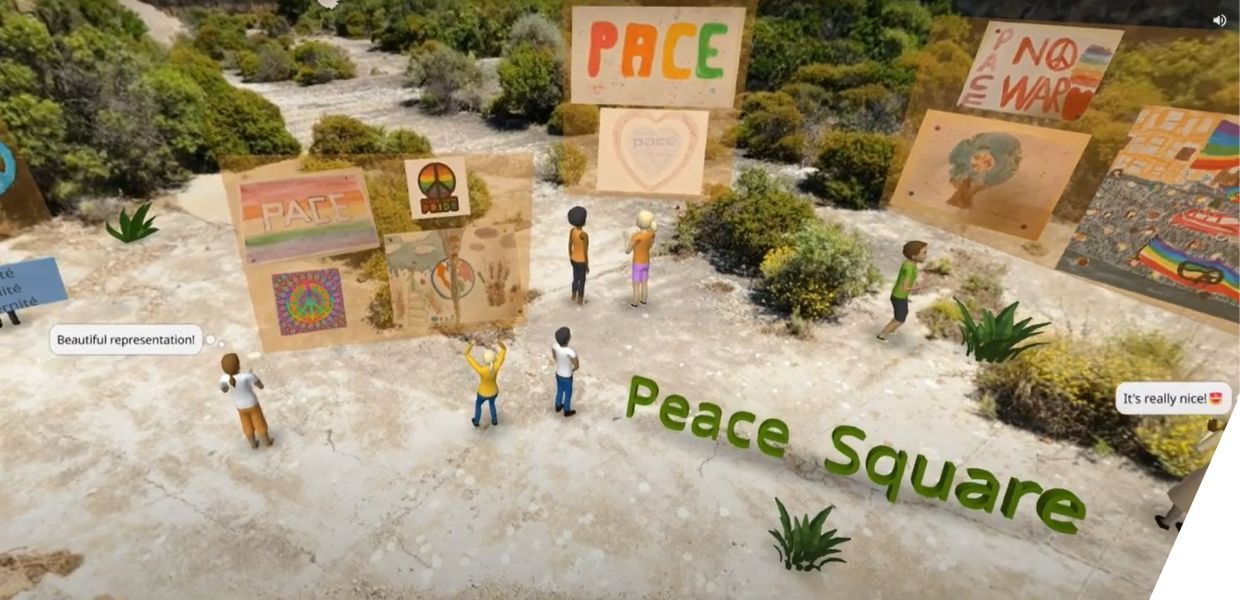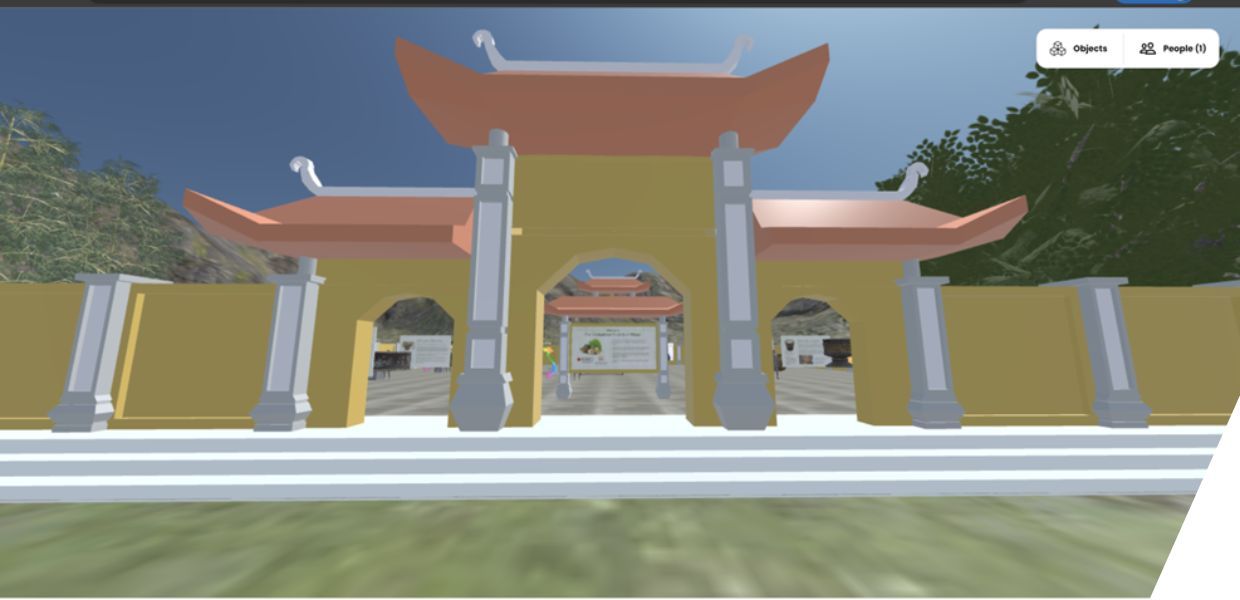Immersive technologies like virtual reality (VR) and augmented reality reality (AR) create distinct experiences by merging the physical world with the digital. They offer the opportunity to engage audiences with cultural heritage in new ways, and offer exciting possibilities for education.
These possibilities have been fully demonstrated by Built with Bits, a mentoring programme and educational challenge for students and educators, organised by the Europeana Initiative. The second edition, run by partners Macedonia Studio, took part in the second half of 2022. It trained 262 students and 19 educators and cultural heritage professionals to use Mozilla Hubs (a virtual world platform) to develop virtual spaces which used cultural heritage resources to offer a creative solution for a local issue. In doing so, the programme fostered collaborations between schools, universities, local museums and libraries, digital artists and UX designers, researchers, historians, architects, local authorities and tourism centres.
The projects developed for the programme are varied and inspiring and provide rich answers to the question: why use immersive technologies in education?
4. They can bring together institutions to work on common projects for the sake of the community.
The library of the ‘Lucian Blaga’ University of Sibiu, Romania, is an educational, scientific, and cultural institution of major importance in the city. It has an academic community of approximately 14,000 people who offer information and documentation services for the entire local community. As part of Built with Bits, the library worked with a group of 10 students from the local 'Gheorghe Lazăr National College to create an online space which reimagined the library, ensuring that it better met the needs of people with disabilities and making it more welcoming for students.
Camelia Mihaela Volosciuc, Head of Service at the university wanted to participate in the Built with Bits programme in order to, ‘reconfigure the library space in accordance with the principles and values promoted by the European Commission within the New European Bauhaus program, such as aesthetics, sustainability, and inclusivity, to better meet the needs of people with disabilities in Sibiu’.
Monica-Maria Oancea, the teacher coordinating the students’ involvement, underlined how the programme demonstrated that all students could get involved in supporting their community. 'In the Romanian language there is a saying - man sanctifies the place! It refers to the fact that no matter where you are born, what family you come from, regardless of the degree of social welfare, you can do something good, sustainable, thorough and responsible, if only you care.’
The Reconfiguration of the library space at Lucian Blaga University was awarded the Best Cultural Heritage Institution Collaboration to recognise the synergies between the university library and the ‘Gheorghe Lazăr’ National College.



